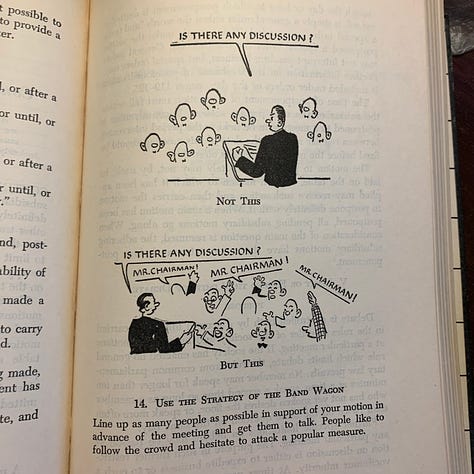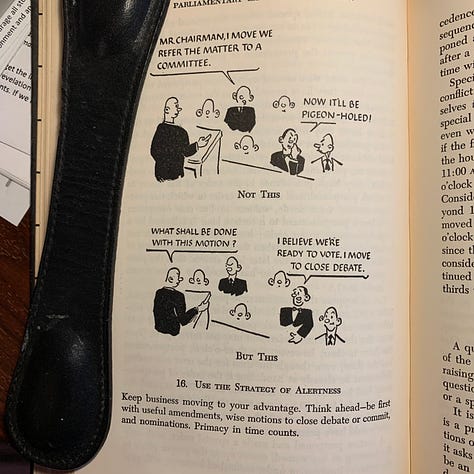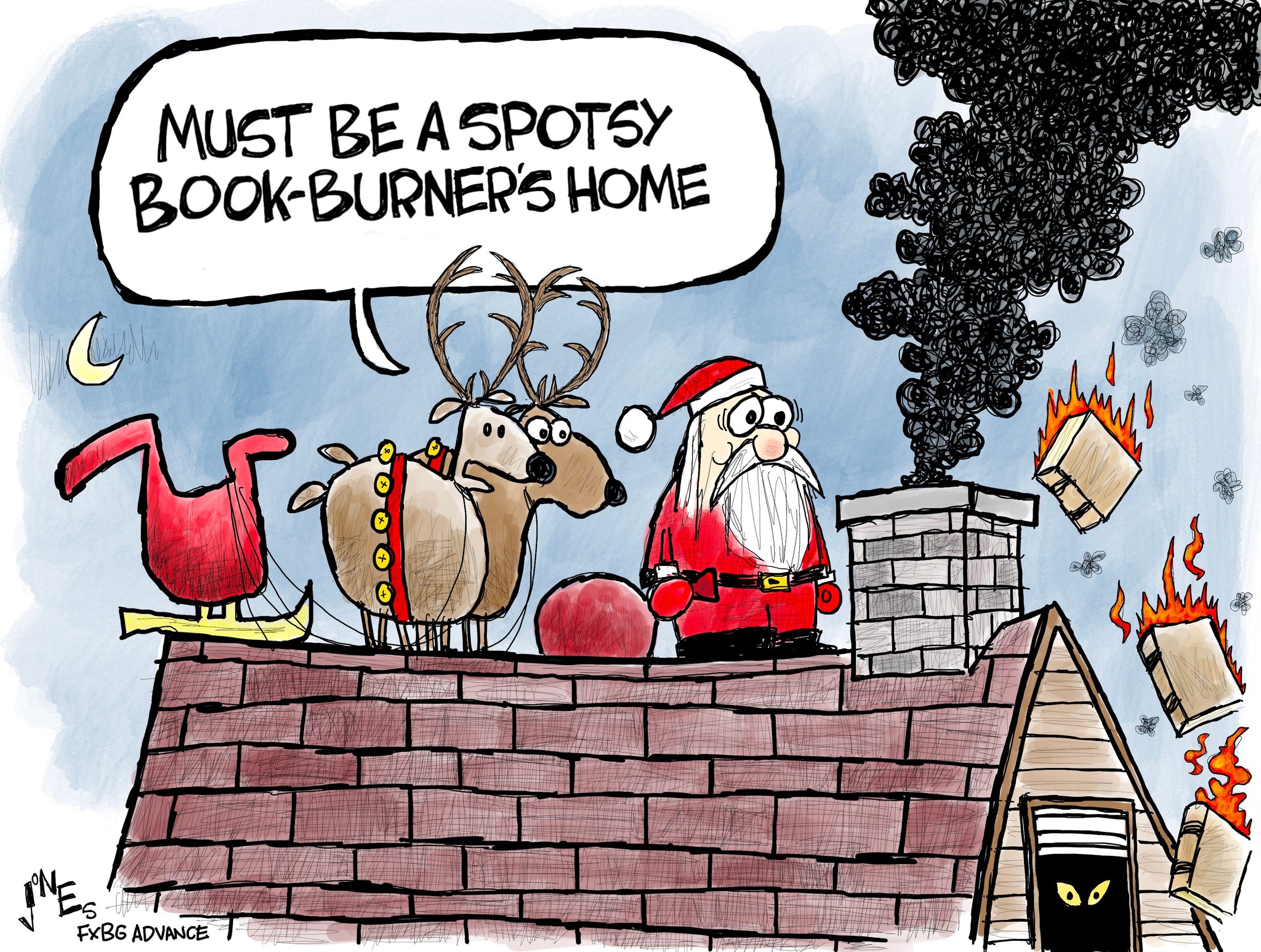
There’s a reason why public officials are called to order, not chaos.
Robert’s Rule of Order (RONR) is not designed to be a cudgel, nor does it exist for its own sake, but rather it exists to order and facilitate decision-making processes by those empowered to make such decisions — elected officials, unit committees, or non-profit organizations.
SOME HELPFUL RESOURCES:
Too often, one sees Robert’s Rules used as a means of evicting or silencing the opposition, and too often we forget that most American of maxims that our form of governance is designed to give majority rule while protecting minority (or oppositional) rights. Today, we seem to forget that our state and local governments do not have to mimic the national climate in tone or rhetoric. Surely there are better ways to disagree without becoming disagreeable, yes?
Unfortunately, this is not the case in Spotsylvania, where I had the unfortunate opportunity to watch utter chaos. While I would much rather not get into the who-shot-John over what they were discussing or the stakes, the discussion certainly was one where the players could benefit from a little bit of decorum.
Of course, while members of any group or organization have a duty to understand Robert’s Rules and play by them, additional care must be taken by the chairman of any body — elected or otherwise — to be a fair, impartial, and orderly.
When the gavel drops at the beginning of any meeting, three words remind us — both in the majority and the minority, both Democratic and Republican — of the task of any great process: Come to order.
With that — a helpful primer on Roberts Rules of Order from an old book borrowed from my grandfather’s library entitled Parliamentary Practice for the Layman which include more than a few pictures that may help those of us who find ourselves creating order from democratic chaos:
Some Helpful Tips in Comic Form
Three Things to Remember Right Out of the Gate
- The degree of unity in the group should determine the degree of formality. If there is a great deal of unanimity, Robert’s Rules can be rather lightly imposed. If the group is contentious? Then the procedure of the group should be highly formalized with clear rules of engagement and debate.
- The size of the group should determine the degree of formality. If a smaller group for around 25? Robert’s Rules can be observed but not too rigidly. Yet if it is a larger group — think your local Republican or Democratic committee or a district convention for House of Delegates or State Senate — then Robert’s Rules should be highly formalized.
- The knowledge of parliamentary law of the group should govern the degree of formality. If there is little knowledge of Robert’s Rules then the bare bones can be observed. Yet if the body itself is educated in parliamentary procedure, then a degree of formality should exist.
If you are the local Rotary Club or Knights of Columbus? Robert’s Rules probably doesn’t need to be strictly enforced. Even governing bodies imbued with the public trust such as the local Planning Commission can go easier than others on strict applications of Robert’s Rules.
Yet our school boards and local governing bodies? Probably owe it to themselves to have a basic to intermediate grasp on Robert’s Rules, what it does, what motions take precedence, whether an objection or other non-debatable motion is germane, and if serving in the role of either chairman or mayor, how to effectively and smoothly run the meeting while observing your boundaries as a chairman.
More Helpful Tips in Comic Form
Some Basic Motions
Of course, every meeting begins with an agenda, typically divided into a consent agenda and business divided into old and new. The consent agenda is precisely as described — non-controversial items which should pass unanimously and moved as a bloc. If there is anything on the consent agenda that might require conversation, the chair — who is typically responsible for setting the agenda — should move it to new business. Even if it may actually pass unanimously…
Following this, there should be presentations on each item of business in order to frame what is being considered, not the conversation itself. Members of the body will frame the conversation in the following way.
- Motion: “Mister/Madam Chairman, I move that we…” …and this is how any and every debate begins, with a motion that is to be considered and discussed. Motions must be seconded before debate can begin. In some localities, debate begins first before motions are made — again, this depends on the cohesion and culture of the organization.
- Amend a motion: At times, the body may discover that the original motion is either flawed or not what the body wishes to approve. Therefore, any member may offer a motion to amend with the language they would prefer to see. This also requires a second, upon which the debate moves to the motion to amend.
- Commit: Rarely but sometimes used when the organization just needs more information. Or if they want to delay endlessly so as not to vote on a proposal via analysis paralysis. Motion to commit is often abused in Washington.
- Question: In larger groups, a majority can simply ask the floor to call the question and end debate. Calling the question is non-debatable and requires 2/3rds of the vote.
- Adjourn: Getting past midnight? Simply call for an adjournment. This is also a non-debatable motion and requires a simple majority.
EVEN MORE Helpful Tips in Comic Form
Non-Debatable Motions: When to Use Them (and When Not to Use Them)
Of course, in today’s world there seems to be a great deal of emphasis on non-debatable motions in Robert’s Rules, particularly because they are non-debatable and therefore perceived to be outside the objection of the chair — which isn’t true in the slightest, as the chair can rule even non-debatable motions out of order.
Here’s the short list and what they are intended to be used for:
- Point of Order: Raising a point of order is only done in a breach of Robert’s Rules or the rules of the organization. For instance, name calling or questioning the integrity of a sitting board member is almost nearly always a point of order. What a point of order should never be used to do is interrupt a speaker for the sake of interruption — even if you really disagree with that speaker.
- Point of Information: When a member raises a point of information it is typically either to inform generally what the rules and procedures are for a debate, or to get more information about the motion itself. What a point of information is NOT designed to do is to be used as a means of introducing new information to the debate — that’s done during debate when a member is recognized by the chair to speak to the motion.
- Point of Inquiry: This motion is typically used to ask individuals who are NOT members of the body — staff, invited guests, experts — questions specifically to clarify information about what is being proposed. Rarely used.
- Point of Personal Privilege: Sometimes members of the body do things that harm the cohesion of the organization itself. To raise a point of personal privilege is to speak to an action that impairs and impacts the professionalism of the organization writ large. Sometimes it is used when members disparage other members; sometimes it is used to praise members who enhance the cohesion and order of the group. One will nearly always see members take a point of personal privilege when making their last speech as an elected official or member of an organization.
The Importance of Being a Good Chairman
One of the key things any chairman can do — even if one knows the political leanings or opinions of a chairman — is to be confident, impartial, efficient, orderly, helpful, and correct.
Robert’s Rules itself offers advice to chairs, specifically (pp. 449-450):
- To open and call the meeting to order.
- To announce in proper sequence the business that come before the assembly.
- To recognize members who are entitled to the floor.
- To state and to put to vote all questions that legitimately come before the assembly.
- To protect the assembly from obviously dilatory motions.
- To enforce the rules relating to debate and those relating to order and decorum.
- To expedite business in every way compatible with the rights of the members.
- To decide all questions of order, subject to appeal.
- To respond to inquiries of members relating to parliamentary procedure.
- To authenticate by his or her signature, when necessary, all acts.
- To declare the meeting adjourned.
Good nature, impartiality as a presiding officer, keen to move the proceedings along, following the rule “one thing at a time” when discussing motions, serving the assembly, and someone who rules by the book. These are the qualities — and they can be learned and practiced — of good chairs.
Good chairmen also have an eye towards limiting the distractions and tactics which prevent good order. Public comment is a privilege that can be limited. Members of the elected body should limit their remarks to a handful of minutes. Motions and points of order — if designed to limit good order — should be dismissed as non-germane and dilatory, or if the assembly is so wrapped up in its own semantics, a “Gordian Knot” motion be made to either suspend the rules or withdraw the motion and start over.
Should a chairman wish to speak on a motion, it is imperative that they hand the gavel over to their vice-chairman for the duration of the motion. IMPERATIVE.
More than this, every member should feel as if they have been heard. Not superficially but heard in the sense that both the majority and minority views have been faithfully stated and can be faithfully repeated by the other side — and only then do we proceed to a vote. Sometimes bad actors refuse even this latitude, but good chairs do their best to pull this out of members and elected officials even at the sake of time, because it enhances both the cohesion of the body and good order.

























